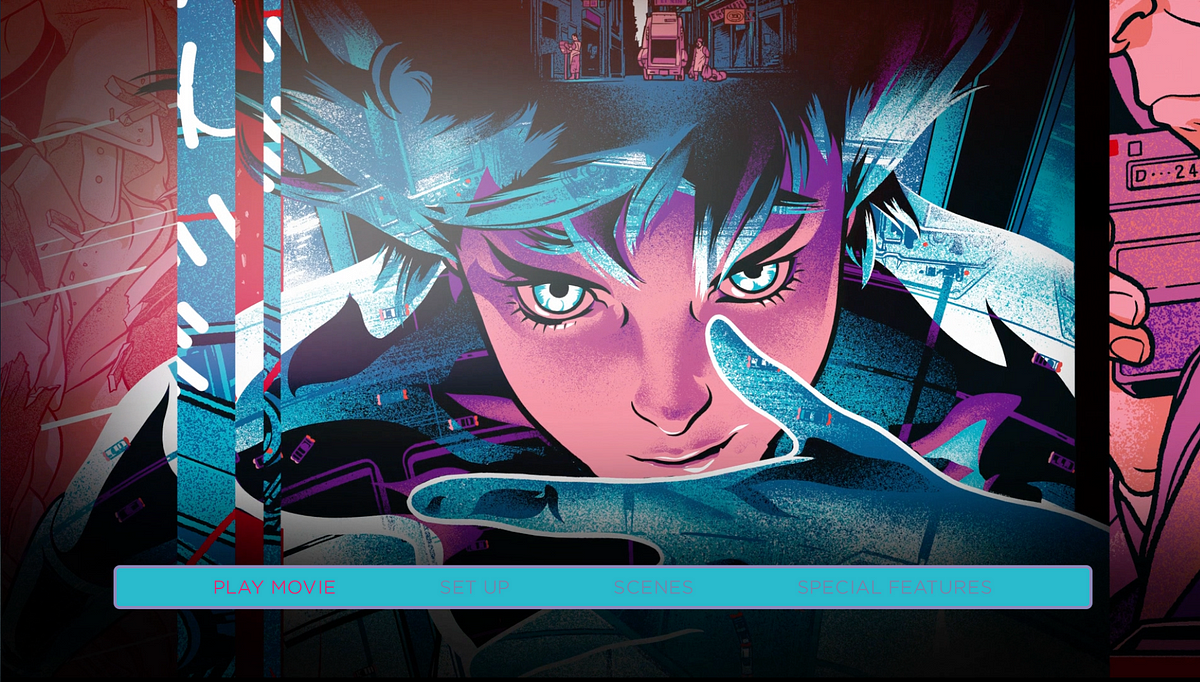

Over the years multiple spin-offs, sequels, reboots and other derivative Ghost In The Shell works have been created, all of them owing more to this first movie’s style and aesthetic than the original manga, which at this point has been thoroughly and permanently eclipsed by its adaptations.
#Ghost in the shell 1995 english movie#
That movie became famous both in Japan and overseas, forming an early spearhead of the mid-90s anime invasion of America and winning Oshii acclaim from cinema buffs and fellow film-makers all over the world. In 1995 the famous director Mamoru Oshii adapted the manga into an anime film of the same name, and in the process turned it into a slow-paced, moody art piece that’s heavy on philosophizing and introspection (this is kind of Oshii’s thing as an anime director he had done it multiple times with other properties before this and would go on to do it again afterwards). It’s my understanding-I haven’t read it myself-that this original version of the story was a little less cerebral than people coming to the property via its adaptations and spin-offs might expect, being heavier on raunch and action. Ghost In The Shell started life as a manga by author Masamune Shirow. It’s pretty easy to see why this became such a cornerstone of the cybperpunk genre, given that those haunting opening words are possibly the most succinct summation of the genre’s underpinning philosophy that’s ever been written. In the near future, electrons and light flow freelyĪnd corporate computer networks eclipse the stars.ĭespite great advancements in computerization,Ĭountries and races are not yet obsolete…

So imagine my surprise when I watched them both back to back and discovered, to my absolute astonishment, that the remake is even more of a huge waste of time than I thought it was going to be. Which one is better? Well, I obviously went in expecting that the Japanese original would be vastly superior to the watered-down American remake. I saw the movie for the first time when I was around thirteen or fourteen, in hindsight way too young to either be entertained by it or to understand it, so I recently decided to re-visit it along with the American live-action remake that came out a few years ago.

That would help explain another recent Japanese phenomenon, the fad among (straight) teenage boys of dressing like girls.If you’re any sort of sci-fi fan at all, and especially if you’re into the cyberpunk corner of the genre, then you’ve almost certainly heard of Ghost In The Shell. An article about anime in a recent issue of Film Quarterly suggests that to be a “salary man'' in modern Japan is so exhausting and dehumanizing that many men (who form the largest part of the animation audience)project both freedom and power onto women, and identify with them as fictional characters. The movie uses the film noir visuals that are common in anime, and it hares that peculiar tendency of all adult animation to give us women who are(a) strong protagonists at the center of the story, and (b) nevertheless almost continuously nude. In describing this vision of an evolving intelligence, Corinthians is evoked twice: “For now we see through a glass, darkly but then face to face: now I know in part but then shall I know even as I am known.'' At the end of the film, Puppet Master invites the major to join it face to face in its brave new informational sea. All of the information accumulated in a lifetime, we learn, is less than a drop in the ocean of information, and perhaps a creature that can collect more information and hold onto it longer is. There is much moody talk in the movie about what it is to be human. ''The major and other characters can change shapes, become invisible and dive into the minds of others-which places them not so much in the future as in the tradition of Japanese fantasy, in which ghosts have always been able to do such things. Her unit is assigned to investigate an evil foreign operative who wants political asylum, but soon the case leads to contact with the Puppet Master, the “most dreaded cyber-criminal of all time. Motoko Kusanagi, a cyborg who runs an intelligence operation. The lead character is a shapely woman named Maj. Sample dialogue: “Aside from a slight brain augmentation, your body's almost entirely human.'' Or, “If a cyber could create its own ghost, what would be the purpose of being human?'' Or (my favorite), “You're treated like other humans, so stop with the angst!'' The movie has a tendency, as does a lot of traditional science fiction, for its characters to talk in concepts and abstract information.


 0 kommentar(er)
0 kommentar(er)
